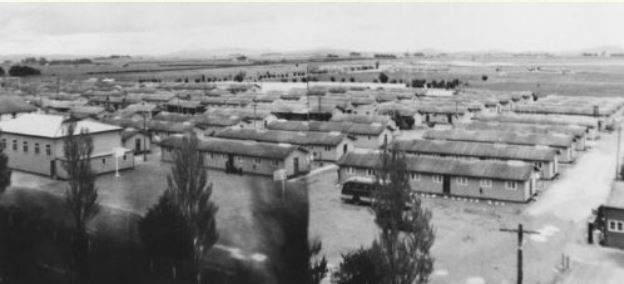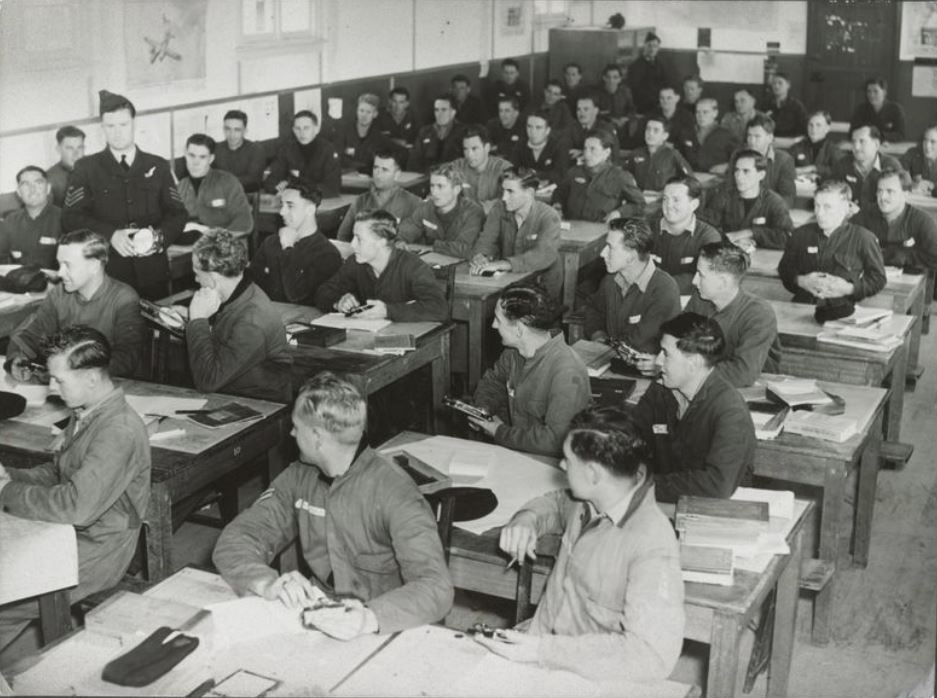Difference between revisions of "No. 1 Wireless Air Gunners School RAAF"
From Our Contribution
(→Trainees) |
(→Trainees) |
||
| (4 intermediate revisions by the same user not shown) | |||
| Line 36: | Line 36: | ||
* [[Tom Shelley Griffiths]] 13 Nov 1941 - 30 May 1942 | * [[Tom Shelley Griffiths]] 13 Nov 1941 - 30 May 1942 | ||
* † [[Edward Watling]] 11 Dec 1941 - 28 Jun 1942 | * † [[Edward Watling]] 11 Dec 1941 - 28 Jun 1942 | ||
| − | * [[Eric Green Traill-Nash]] 10 Oct - 18 Mar 1945 | + | * [[John Chadwick Meachem]] 16 Sep - 26 Dec 1943 |
| + | * [[Henry Frederick Wills]] 3 Feb - 14 Sep 1944 & 17 Feb - 5 Aug 1945 | ||
| + | * [[Sydney Roy Smith]] 21 Jun - 24 Aug 1944 | ||
| + | * [[Eric Green Traill-Nash]] 10 Oct - 18 Mar 1944 | ||
| + | * [[Denzil Dale Fletcher]] 7 Dec 1944 - 12 Jun 1945 | ||
| + | |||
====Notes==== | ====Notes==== | ||
Content has come from ''Units of the Royal Australian Air Force - A Concise History - Volume 8 Training Units'' - Australian Government Publishing Service - 1995 | Content has come from ''Units of the Royal Australian Air Force - A Concise History - Volume 8 Training Units'' - Australian Government Publishing Service - 1995 | ||
Latest revision as of 18:21, 12 April 2024
 P-Type Huts to accommodate trainees | |
 Trainees in class at 1 WAGS | |
Brief History
No. 1 Wireless Air Gunners School was established at Ballarat, Victoria to train wireless operator/air gunners as part of the Empire Air Training Scheme. Operations commenced on 29 April 1940 at the Ballarat Showgrounds, but it was not until October that the School received its first aircraft-four Avro Ansons, having moved to Ballarat Airfield. At the end of 1940 the unit's overall strength was 770.
During January 1941, two Douglas DC-2 aircraft were received. In March, another DC-2 was brought on strength, and these aircraft were joined by a de Havilland DH.82A Tiger Moth in May and seven CAC Wackett Trainers in October. In early 1942 the school doubled in size, with the unit staffing increasing to 43 officers, 1,238 airmen, five civilian instructors and seven civilian labourers. The aircraft available were 2 Douglas-DC2s, and 51 Wackett trainers. By the end of 1943, 3,836 Wireless/air gunners had been trained.
In late 1944 No. 3 Wireless Air gunners School had been absorbed into No. 1 School, and the unit was now also training radar and wireless (air) trainees. By then, 5,025 trainees had passed through the school. In January 1945 a Radar Training Wing was established, with the first training course completed in February. The Radar Wing then absorbed the Radar School from Maryborough, Queensland, during September 1945.
Basic training for Wireless operator (air) ceased on 31 May 1945, after 3,500 trainees had graduated from the School. The nature of the unit was intended to change to become an aircrew pool, and 400 aircrew were posted in. On 16 July a pre-operational, training gunnery section was established using 0.303 inch and 0.50 inch Browning guns and a Bristol turret and power unit, to train wireless operators (air) before they were posted to No. 7 Operational Training Unit. No. 1 Wireless Operator (Air) Refresher Course commenced on 2 Feb 1945, and 646 trainees undertook this course. 746 radar trainees also passed through the School. No. 1 Wireless Air Gunners School was wound up on 21 Jan 1946.
Unit Personnel
- Robert (Mick) Bunney 4 Feb - 18 Aug 1942 - Flight Rigger
Trainees
- Billy Kendall Collins 6 Mar - 6 Aug 1941
- † Leslie John (Jock) Powell DFC 26 Jun - 11 Dec 1941
- † Raymond Edward Norton Butcher 3 Apr - 16 Oct 1941
- Tom Shelley Griffiths 13 Nov 1941 - 30 May 1942
- † Edward Watling 11 Dec 1941 - 28 Jun 1942
- John Chadwick Meachem 16 Sep - 26 Dec 1943
- Henry Frederick Wills 3 Feb - 14 Sep 1944 & 17 Feb - 5 Aug 1945
- Sydney Roy Smith 21 Jun - 24 Aug 1944
- Eric Green Traill-Nash 10 Oct - 18 Mar 1944
- Denzil Dale Fletcher 7 Dec 1944 - 12 Jun 1945
Notes
Content has come from Units of the Royal Australian Air Force - A Concise History - Volume 8 Training Units - Australian Government Publishing Service - 1995